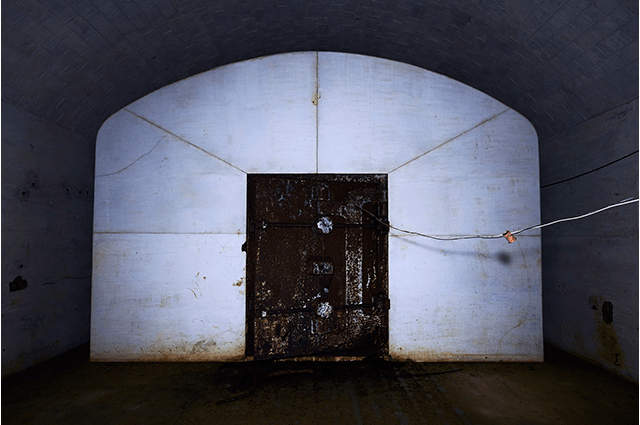The Month of Photography, Tokyo 2023 Photographers in Asia 2023, Socialist Republic of Viet Nam
Photographers in Asia 2023, Socialist Republic of Viet Nam

- Dates
- Friday, May 26 - Thursday, June 1, 202311:00~18:00
Exhibiting Photographer
NGUYEN NGOC HOA

Born in 1981 in Kon Tum. Currently resides in Kon Tum
Back-braking Work of Salt Harvesting
Found along Vietnam's south-central coast, Tuyet Diem in Xuan Binh Commune (Song Cau City, Phu Yen Province) is one of a few remaining villages that still holds onto the traditional way of making salt. Here, brutal manpower is used to harvest and refine briny salt granules into pure sea-fragrant table salt. Though recent years have seen a decrease in the number of households that make salt because of a surge in low-priced, factory-produced imports, there are some in this age of industrialization whose predilection for an old-fashioned approach that has been practiced for more than 150 years continues, despite the low wages and back-braking work, to preserve this traditional craft.
TRAN VIET VAN

Born in 1971 in Nam Dinh Giang. Currently resides in Hanoi City
90-Year-Old Cobbler
Tran Gnoc is a cobbler in Ho Chi Minh City, Vietnam. He's 90 years old but still working.
Having studied at L'École ABC de Dessin in Paris, he can make any kind of shoe you want. And, over his decades-long career, he has made shoes for the Cambodian Royal Family, from the Queen to Prince Sihanouk, as well as many famous Vietnamese singers.
In his words, “Artisanal crafts are kept alive in this hi-tech day and age by people who appreciate art. There are patrons who prefer, for example, paintings over portraits and, therefore, expect the artist to pour his soul into his work. The same goes for a cobbler; a certain level of skill is required, without which you could lose your job.”
Taking his thoughts a little deeper, he added, “Civilization has existed since time immemorial and will likely continue into perpetuity, so I don't see handicrafts disappearing from the face of the earth.”
Since our conversation was already heading in that direction, I asked him what the most important thing in life is, to which he replied, “My life is very simple. The way I see things is that, if I make someone happy, I'll receive twice the happiness in return.”
LY HOANG LONG

Born in 1965 in Soc Trang. Currently resides in Lam Dong
Le Cap Sac of 12 Lamps of the Red Dao
This rite of passage peculiar to the Dao People of Northern Vietnam is held towards the end of the year by the lunar calendar, rather than on a set date like the annual traditions celebrated by ethnic communities in the southern part of the country. What makes it even more interesting is that, because of the spiritual elements and financial underpinnings it requires, the Le Cap Sac of 12 Lamps is an extremely rare event seen only once every 50 years in some villages.
The cultural connotations of the event are heavy, too. Dao men must go through Le Cap Sac in order to be recognized as true descendants of the Dao's forefather, Ban Vuong. The ritual is divided into 3 stages: 3, 7 and 12 “lamps”; lamps are given as a reward for passing the respective stages. Only after completing all three stages are the men officially considered mature within their community. It is also believed that this experience allows them to reunite with their ancestral patriarch in the afterlife.
As the highest and most pious stage, the Le Cap Sac of 12 Lamps is 5 days long and performed by 12 shamans invited just for the occasion. To the sound of drums, gongs and horns, participants go through a series of ceremonies in which an alter is unveiled, the name and position of a “lamp bearer” are announced, the rite of passage is officially commenced and other formalities are conducted, all the while fasting on vegetarian foods from start to finish, learning shamanistic arts, performing a turtle dance and facing challenges.
Crucial throughout the entire ritual are the lamps (candles). They serve to illuminate the soul and sanctify the participants by cleansing them of all sins. Only after this is done can the ritual culminate with its most sacred moment when the shamans seal the covenant of eternal matrimony by conferring a certificate and seal to each participant and his spouse as they kneel at the foot of a step.
Five days of traditional ceremonies, some of which endured until sunrise, were physically tiring, but everyone looked proud and joyous having been able to take part in the decades-awaited Le Cap Sac of 12 Lamps.
NGUYEN HAI DONG

Born in 1969 in An Giang. Currently resides in Ho Chi Minh City.
NGUYEN NGOC THIEN

Born in 1988 in Binh Dinh. Currently resides in Ho Chi Minh City.
Protecting the Sea Turtles of the Con Dao Islands
Located in Ba Rja-Vung Tau Province, the Con Dao Islands are a popular dive destination not just because of the resounding beauty of their pristine seas and white sandy beaches but also because they are home to the most biodiverse marine ecosystem in Vietnam. The archipelago is also where many successful activities have been implemented to rescue and protect sea turtles.
The sea area of Con Dao National Park is known mostly as a habitat of the green sea turtle.
Every June to September is the peak of the nesting season when mother-turtles climb ashore the sandy beaches, dig holes and lay their eggs. There are about 18 places in Con Dao National Park, like Cau Island, Tre Lon Island and Tai Island, where mother-turtles can be seen scattered across the beaches -- the biggest nesting grounds being the wide beachheads of Bai Canh Island.
Sea turtles play an important role in maintaining a healthy balance within the marine ecosystem, but their numbers are constantly decreasing due to natural predators, disease, and intentional and unintentional fishing. And, because they take so long to grow, sea turtles are faced with a low survival rate and a high death rate. Just a small proportion of those that hatch -- roughly 1 in every 1,000 -- safely reach adulthood. That is why it is not only necessary to protect and preserve their natural habitat and a sustainable marine ecosystem, but also to cooperate in efforts to expand programs that directly protect the sea turtle. According to statistics, over 21,000 eggs have been rescued since 1995 and, of those rescued eggs, over 80% have hatched, thanks to the continuous efforts of the Con Dao National Park Administration. Because of the successful work done to protect the sea turtle, the Con Dao Islands were officially listed as the 11th site in the IOSEA Network Sites of Importance by the signatories to the Memorandum of Understanding on the Conservation and Management of Marine Turtles and Their Habitats of the Indian Ocean - Southeast Asia (IOSEA Marine Turtle MoU).









On September 21, 2023, Japan and Vietnam will be marking 50 years of diplomatic relations. To commemorate this milestone, the Photographers in Asia 2023 international exhibition of this year's Month of Photography, Tokyo photo festival is featuring photographers from the Socialist Republic of Vietnam.
Vietnam previously headlined the exhibition in 2006, but the 17 years since then have flown by. In the meantime, Vietnam's economy has rocketed from a 60 billion USD GDP in 2006 to 410 billion USD in 2022. And, except during the Covid-19 pandemic, Vietnam has maintained one of the highest growth rates in ASEAN, showing itself to be a politically and economically stable country.
Though Vietnam can boast 2,000 years of nationhood, it's history has sadly been marred by endless foreign interference in the form of subjugation to Chinese rule long ago and the Indochina Wars and US-led Vietnam War in more recent times. Alongside the years of influence from countries like China and France, Vietnam has developed a unique culture, including a world-loved cuisine whose more known elements are modeled in many ways on Chinese food.
Though slightly narrower than Japan, Vietnam is geographically long in the north-south direction, which affords it borders with China, Laos and Cambodia. Like Japan, much of the terrain is mountainous or coastal, which gives it a richly variable climate and scenic landscapes. Vietnam is also interesting as a tourist destination with a host of UNESCO World Heritage Sites that draw many Japanese visitors like the Complex of Hue Monuments, Hoi An Ancient Town and Ha Long Bay.
Japanese-Vietnamese relations have since the Cambodia Peace Agreements of October 1991 spanned politics, economies, security, cultural exchange and other fields of cooperation as a “broad ranging strategic partnership for peace and prosperity in Asia”. However, relations between the two countries actually date back to the 16th century. With Chinese ports closed at the time because of a ban placed on sea trade by the Ming rulers, Japan sought other trading partners in Southeast Asia and developed a booming maritime trade on the strengths of armed merchant ships that sailed with a “Red Seal Permit” issued by feudal authorities. In exchange for the silver, copper, sulfur, swords and other products they exported abroad, they brought back raw silk, woven silk products and cotton fabrics from what is now Vietnam, Thailand, the Philippines, etc. Trade with Vietnam in those days was so prosperous that a Japanese neighborhood grew in Hoi An. Though trade was disrupted in 1635 by the isolationist policy of the Tokugawa government, Japanese continued living in Hoi An for several decades after the Red Seal Ships stopped coming. So, Japan and Vietnam share some history, which this exchange in the photographic arts only adds to.
At Photographers in Asia 2023, 24 photographers and 1 group from Vietnam will be showing works that capture how the country and culture have developed and changed since Vietnam's first appearance at this international exhibition in 2006, at 5 locations across Tokyo - The Gallery at Nikon Plaza Tokyo, Sony Imaging Gallery, Lumix Base Tokyo, Place M and Hiltopia Art Square.
The exhibition will give you a peek into a new Vietnam -- one full of animated lifestyles and traditions, beautiful landscapes and an aging population like Japan -- through artistically rendered works. I ask that you find the time to visit the exhibition and salute 50 years of relations between Japan and Vietnam.
Masamitsu Obata
Chairman, Operations Committee of The Month of Photography, Tokyo 2023
Chairman, International Exchange Committee, Photographic Society of Japanese